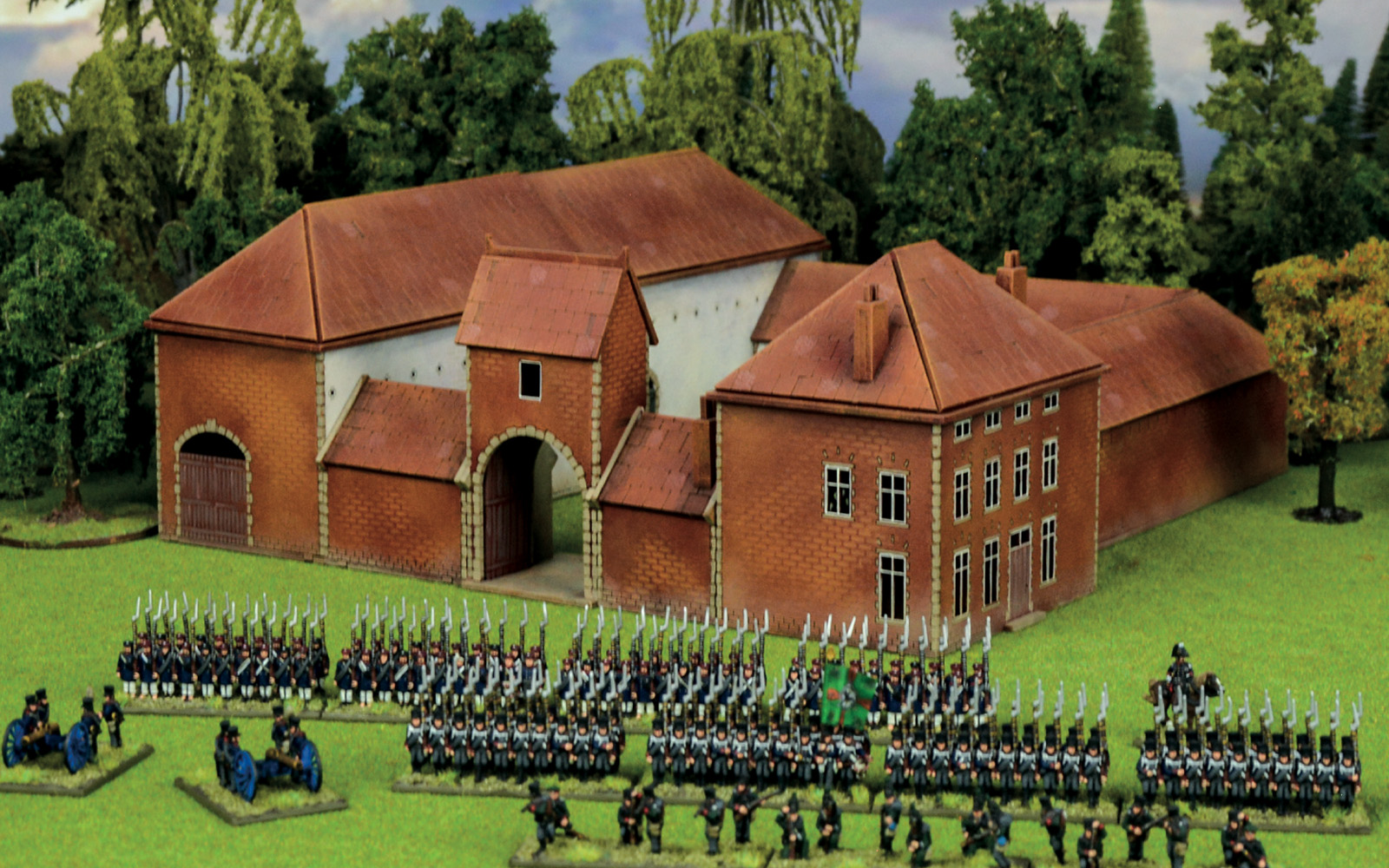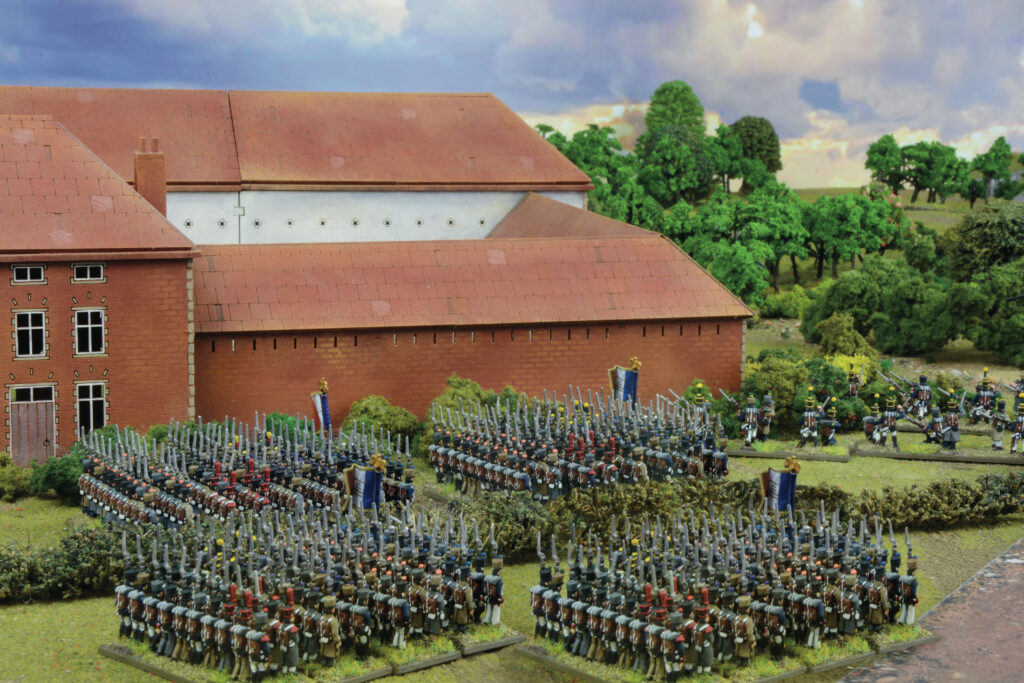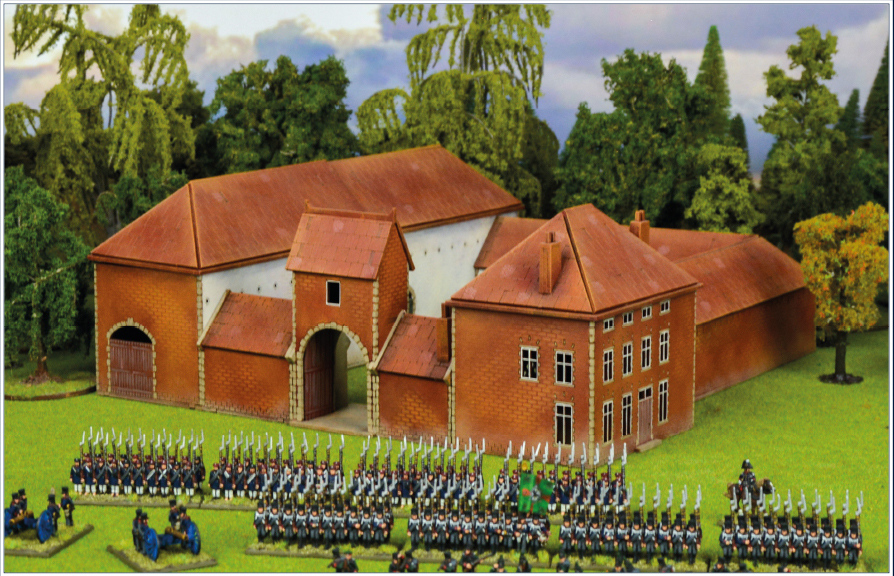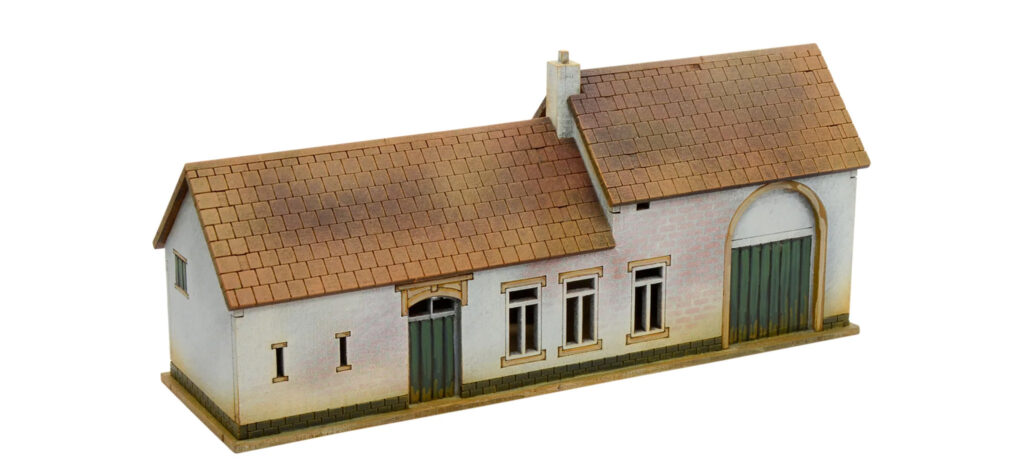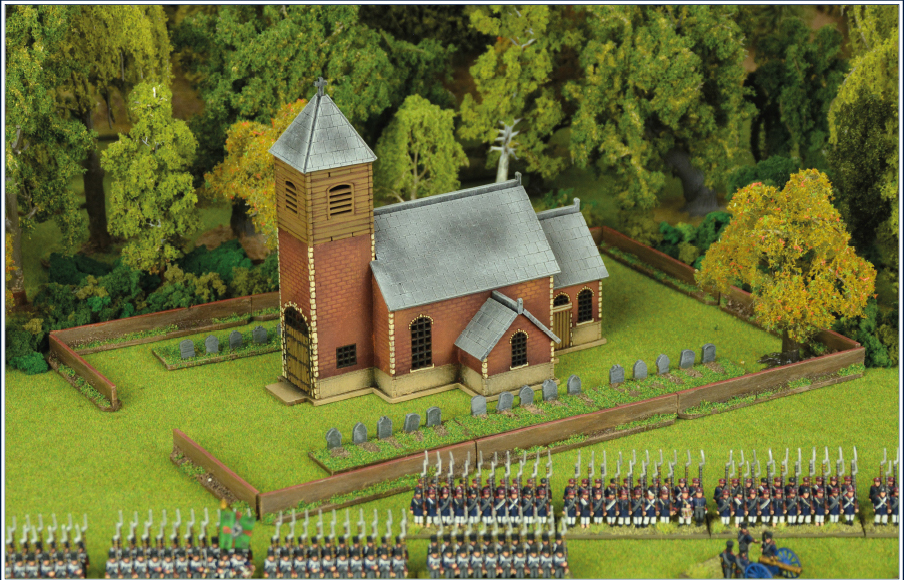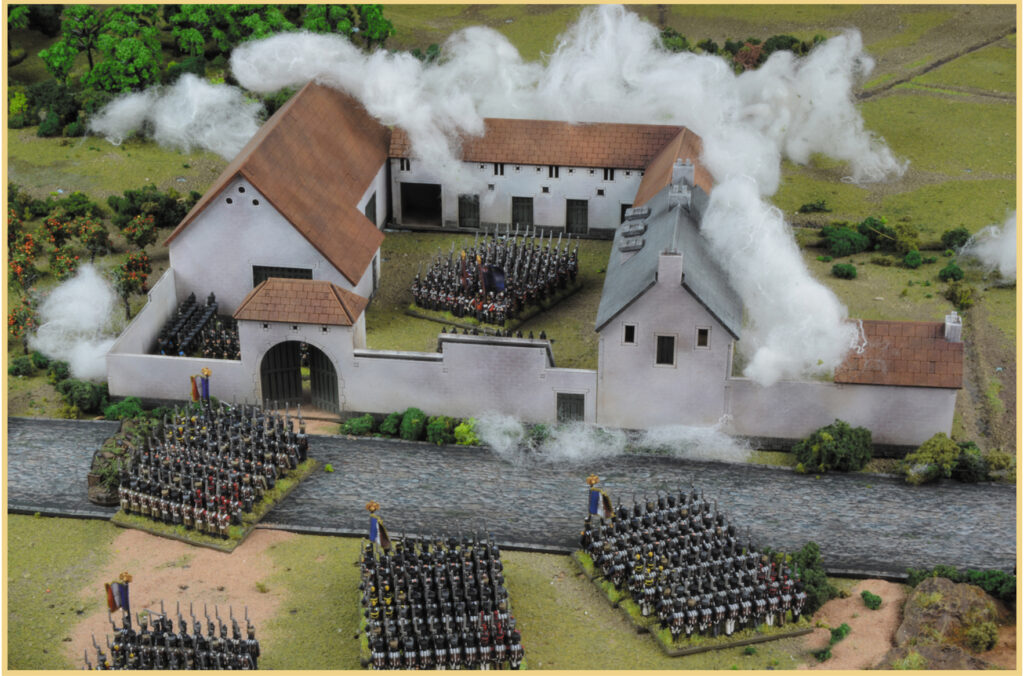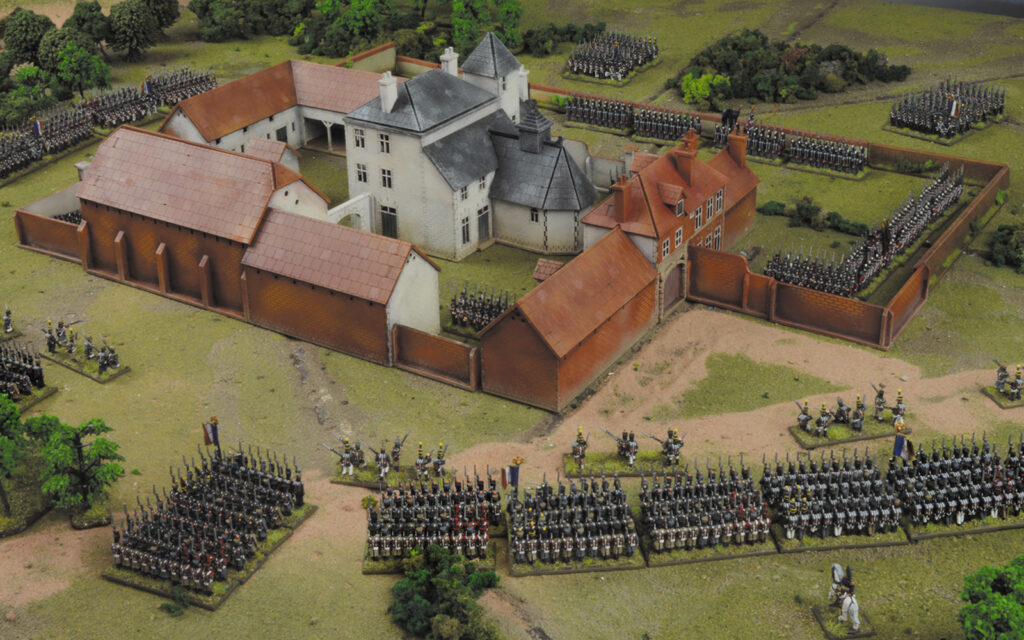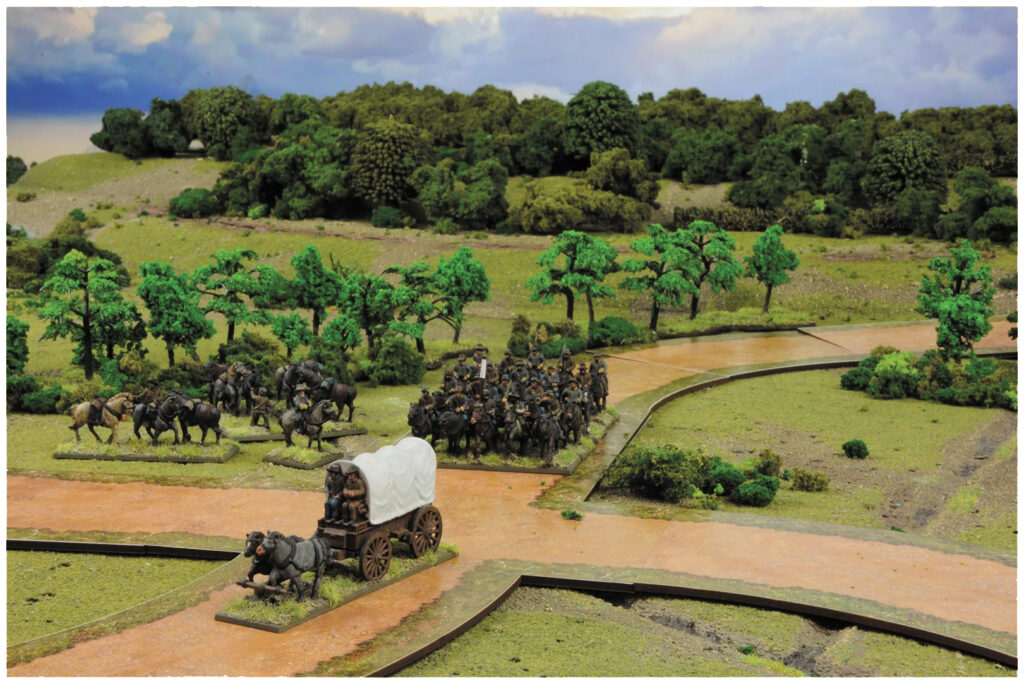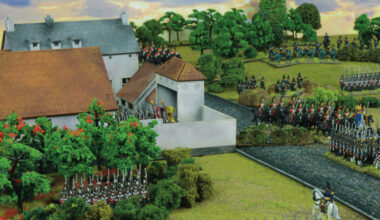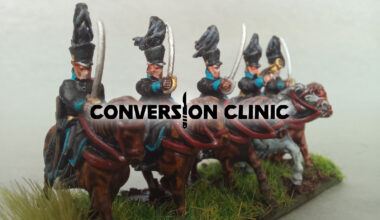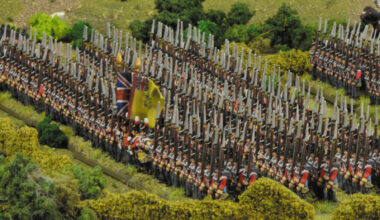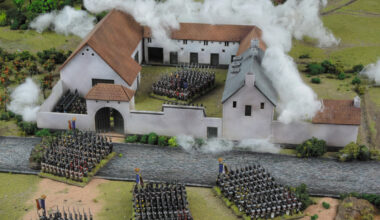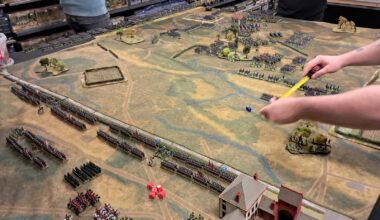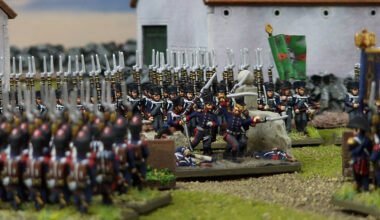Over the last few weeks, we’ve been shining a spotlight on the fantastic laser-cut MDF kits of the important structures at Waterloo, provided by our friends up the road at Sarissa Precision – today, we’ll wrap up the series with a triple-header covering Papelotte Farm, the Dacoster House, and La Belle Alliance inn.
Papelotte Farm
We’ll start with the farm at Papelotte. A classic Belgian walled farm, much like Hougoumont and La Haye Sainte, it formed part of Wellington’s centre-left along with La Haye farm (not to be confused with La Haye Sainte!), as well as Frischermont chateau and the village of Smohain. This region was garrisoned by the Orange-Nassau regiments of the King’s Dutch Brigade, with the support of the British light cavalry.
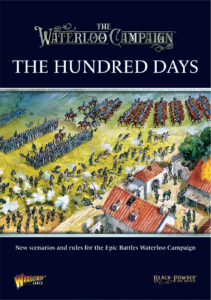
When the French under D’Erlon advanced on the allied positions, Frischermont quickly fell to Napoleon’s forces (Wellington having been unable to spare any troops to defend it), while Voltigeurs skirmished with the green-coated Germans around Papelotte and the villages. Smohain became the scene of heavy fighting, and Papelotte and La Haye came under artillery fire from Napoleon’s massed guns. Forming into their distinctive attack columns, the French drove at Papelotte and La Haye, hoping to take them swiftly by storm and use them as a springboard to launch their attacks on the allied centre. La Haye resisted fiercely, while the defenders at Papelotte were compelled to withdraw after putting up a spirited fight in the early afternoon. This saw Napoleon’s forces poised to consolidate their gains, with the allies left in a precarious position.
Much discussion has since been had regarding the relative wisdom of the charge of the British heavy cavalry against D’Erlon’s corps, but there is no doubt that it saved the German troops around Papelotte. The carnage caused by the heavies, and the subsequent covering action by the British light cavalry, broke the back of the French attack and forced them to withdraw – by 3pm, Papelotte was back in Nassau hands, but both sides had suffered significant casualties. During the afternoon, the advancing Prussians finally began to reach the allies, but were not in a position to immediately help the Germans.
Shortly after 6pm, the French mounted another furious assault on the Nassau positions – Papelotte was once again stormed, with the defenders falling back in good order. This attack, however, used up the last vestiges of the strength of many of the French troops, and a gradual retreat began, with the allies once more occupying their original positions. At this stage, the Prussian troops were finally beginning to filter into position, and the battle was turning against Napoleon – however, the Emperor still had his beloved Imperial Guard to commit…
When the Guard were finally deployed, the entire French line surged forward to support them in one last heroic effort. Once more, Papelotte was taken, but the Prussians had at last arrived in full force. While there was an ugly moment of confusion at La Haye where the Prussians mistook the Nassau defenders for French (their uniform being very ‘French’ in style) and engaged them – a nasty firefight took place before the mistake was realised – the arrival of Blücher’s men turned the tide of the battle once and for all, and Napoleon’s army soon disintegrated around him. The Battle of Waterloo was over, and the heroic efforts of the defenders in and around Papelotte had played a crucial role in shoring up Wellington’s line long enough for the Prussians to arrive.
The fantastic MDF kit from Sarissa Precision gives you a fantastic representation of Papelotte farm as it appeared during the battle, and will also serve admirably as a ‘generic’ Belgian farm for other games. Will you hold the line until the Prussians arrive, or can you seize Papelotte early in the day and give the Emperor the advantage he needs?
Decoster House
Next up is the Decoster House, found in the French Starter Set. This house, by which Napoleon stationed himself for much of the battle, was home to one Jean-Baptiste Decoster (or Dacoster, De Koster, and a host of other spellings!), who found himself pressed into service as an unwilling local guide for Napoleon. In the years after the battle, he became one of the earliest battlefield tour guides, reportedly amassing a significant fortune before his death. This kit provides both an excellent command post for all the tabletop French Generals out there and an ideal objective or feature of interest on any Epic Battles tabletop.
La Belle Alliance
Finally, we have the nearby inn of La Belle Alliance, from the British Starter Set. Famously the site where Wellington and Blücher met at the end of the battle, it was originally suggested as the name of the battle itself. Fortunately, the much more catchy ‘Waterloo’ prevailed! As with all of the other kits from our friends at Sarissa Precision, it makes a great unnamed inn ‘somewhere in Belgium’, but I think the best use of them all is to get the entire ‘set’ on a truly massive table for a properly Epic game!
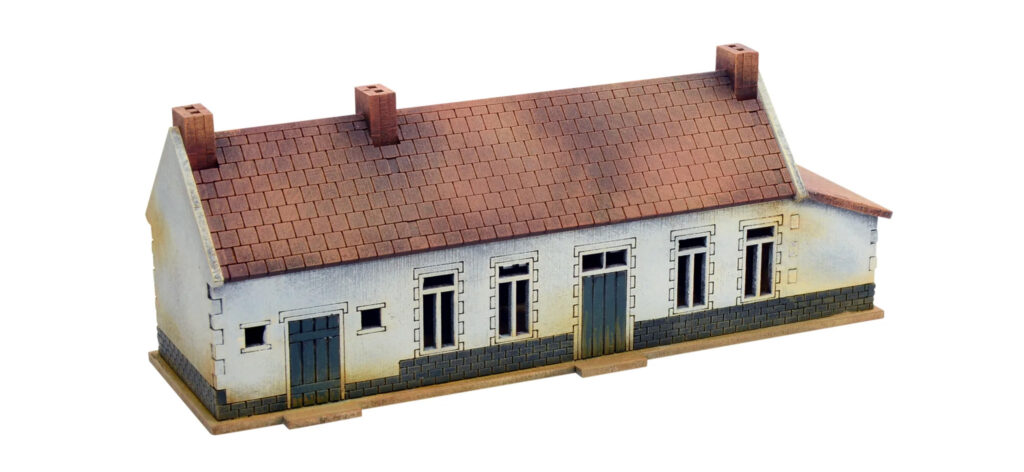
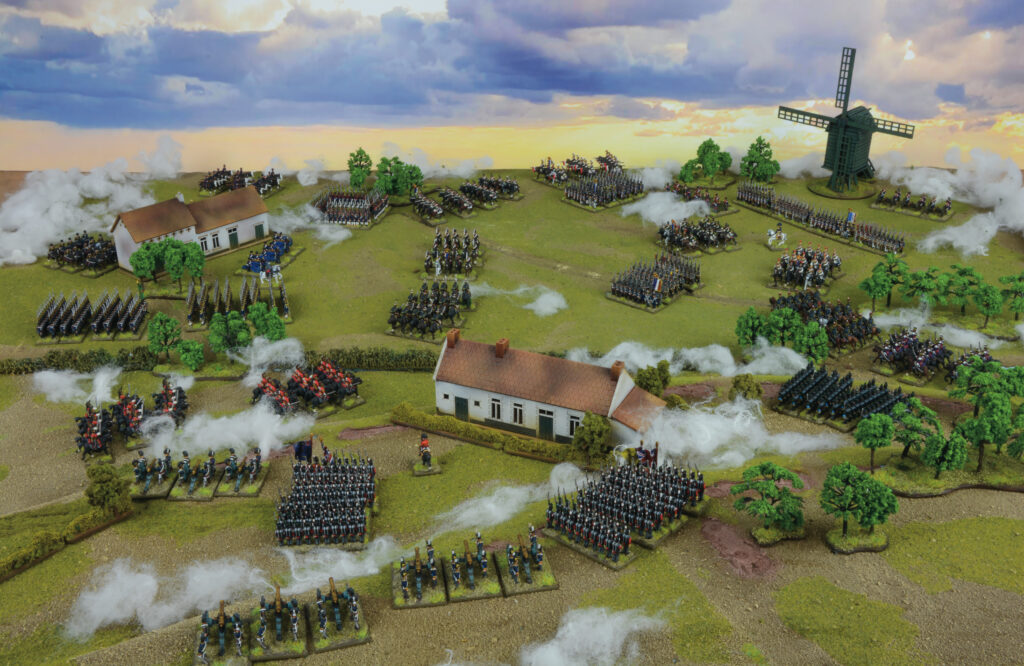
The Wider Battlefield
Explore other iconic sections of the field of Waterloo with these other scenery sets; the settings for some of the most studied military actions in history:
